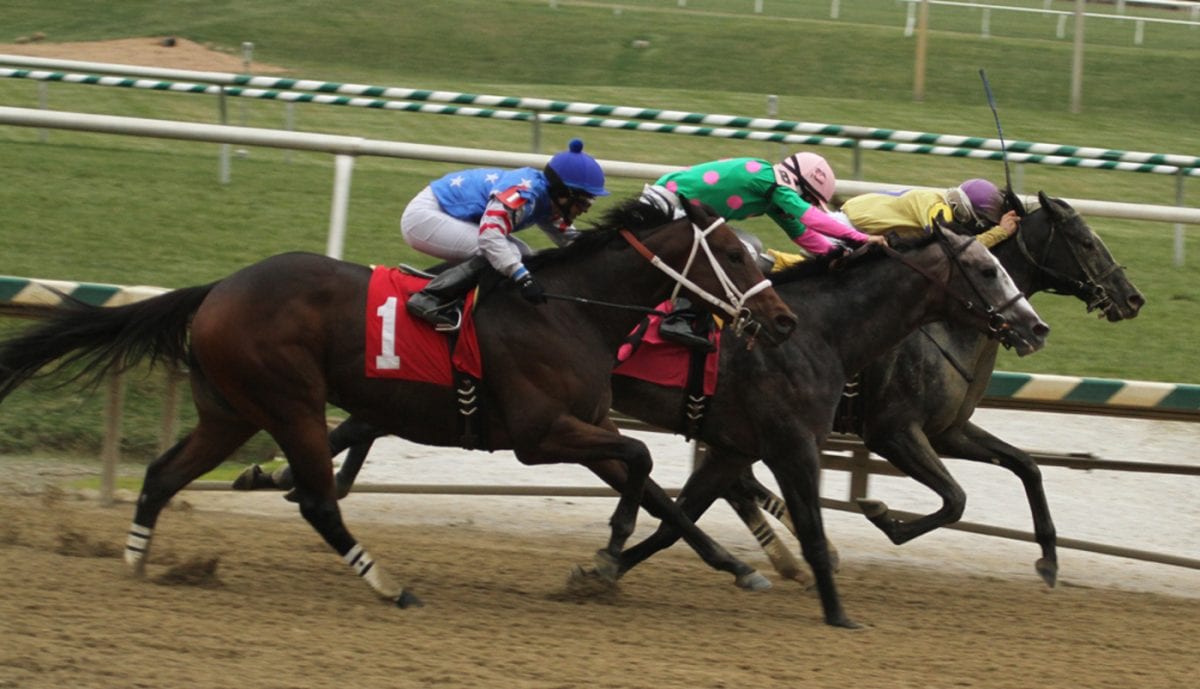In the seventh of his weekly series, Handicapping Zen, handicapper and author Bobby Zen examines the art and science of handicapping horses.
by Bobby Zen
So, you earmark a wad of money for playing the ponies, and then just make solid bets and watch it grow. Seems easy, right? Well, not exactly. But, unless you are just heading out to the track for a fun day, and are prepared to lose the whatever cash is in your pocket, you DO need to establish a bankroll for betting.
[boxify cols_use =”3″ cols =”6″ position =”right” box_spacing =”5″ padding =”3″ background_color =”gray” background_opacity =”10″ border_width =”1″ border_color =”blue” border_style =”solid” height =”220″ ] SERIES SIGNPOST
SERIES SIGNPOST- LAST WEEK: Risk tolerance
- TODAY: Money management
- NEXT WEEK: Bringing it all together[/boxify]
That might be somewhere from a few hundred to a few thousand dollars, and must NOT be money that should be spent on any living expenses. Never use the mortgage money, regardless of the “lock” your buddy has lined up today. I use a version of the Kelly Criterion for managing that bankroll, which basically says to bet a percentage of my bank on any given bet. More on that shortly.
Money management in the betting game requires discipline. That means having a plan and being able to abide by it, making thoughtful decisions about a bet and sticking to them.
We’ve all been there at one minute to post, when suddenly you have this flash of “brilliance,” and realize you need to make another bet. So you run madly to the window, cursing or muttering under your breath about the old lady’s indecision at the teller, and just getting that bet down. Whether you win or lose that bet (more often you will lose), it was a poor decision.
You should know how to establish your line for a race, or at least understand your chances of winning (as a percentage). From this point, you will need to get odds that are better than that percentage.
For example, you have a horse that you give a 1 in 3 chance of winning, or 33 percent. The break-even odds would be 2-1, but that’s not good enough; you need to get better odds than 2-1 for a couple of reasons. For one thing, obviously, the goal is not to break even but to make money. For another, your percentage estimates are just that — estimates — and you want to make sure to protect yourself when you’re wrong. So, for example, if a horse’s true chances are 3 in 10, rather than 1 in 3 — an easy “mistake” to make — you’d need better than 2-1 just to break event. For these reasons, many experts recommend you get a 50 percent “bonus” on what you think are fair odds; in the case of a horse whose fair odds are 2-1, they recommend demanding 3-1 before making a play. This is the definitive explanation of “value” that gets bandied about now. The misconception of value for some is that a horse must be a longshot, maybe 10-1 or better, when the reality of value is simply getting better odds than you think they should be.
John Kelly, a scientist who worked at Bell Labs, devised his Kelly Criterion in the 1950s. There are volumes written on this, but the basic concept is pretty simple. My version uses the approach of betting a percentage of my bankroll, which is split into two “accounts,” on any given race. These are prime bets, being win and/or place wagers and accounting for the lion’s share of the bankroll; and action bets, that are horizontals, usually Pick 3 or Pick 4.
The prime bets would be up to 4% of bankroll each, and action bets would be 5% of the bank for the day total. So, if the bankroll is $1000, my win bets would be $40 and my total for the day on horizontals would be $50. The discipline aspect keeps me out of the ditch (screwing up my bank) by running around at the last minute because I heard the trainer say, “He’s ready for a big one today.”
The idea behind the percentage wagers is that the bets and the bankroll will grow when you are hitting winners. When you are not hitting, those bets will decrease in size and do less damage to that bank. Technically, you cannot tap out of money with this process. Worst case, your bets will eventually dwindle to $2, if you have a LONG stretch of no winners.
Trust me, I have made tons of stupid bets (and I’m not done yet), but this money management works. I have used it for over ten years with solid performance, and it made a huge improvement to my game when I instituted it. Obviously, you can massage the money management and bet choices to meet your personal preferences, but it is imperative that you track your performance.
At the end of the day, the key is simple: You need to know what works and what does not to be able to make improvements.
Bobby Zen holds an MBA and is a professional handicapper and author. His win percentage has exceeded 40 percent in each of the last five years. Learn more at www.bobbyzen.com. (Featured photo by Laurie Asseo.)








